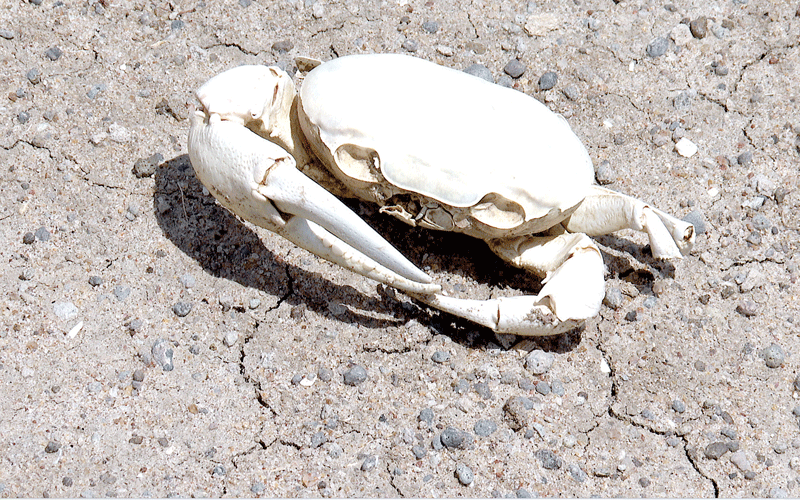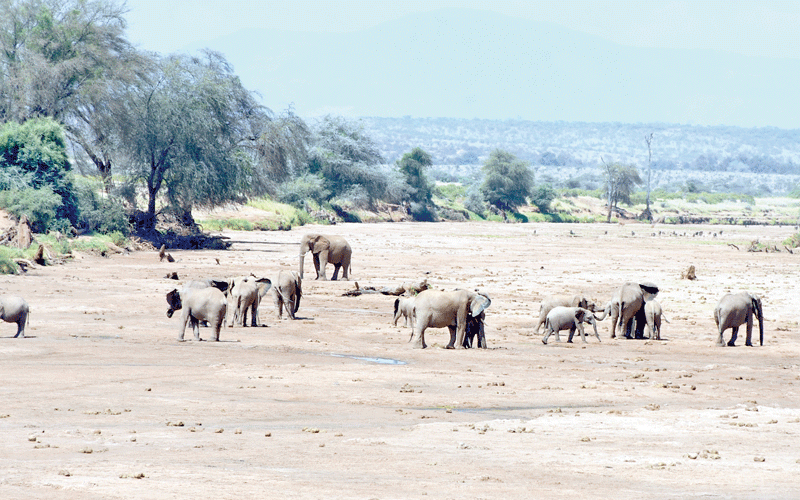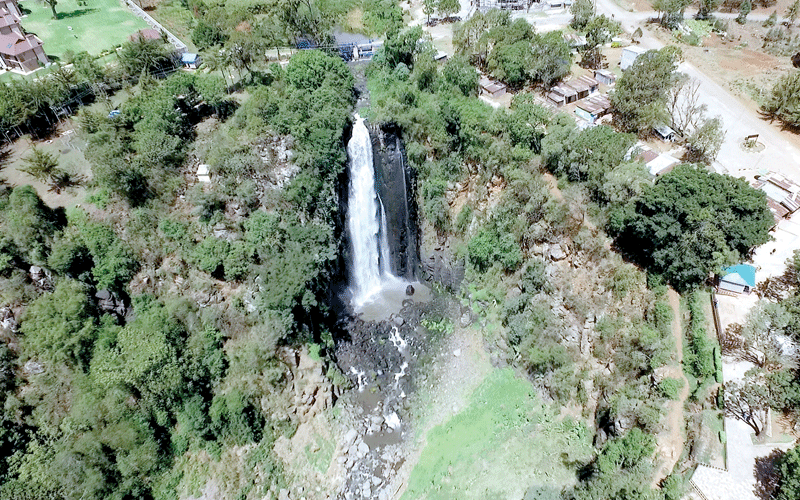Millions stare at starvation as climate change takes toll

More than 2.6 million Kenyans are facing starvation due to drought that has affected at least 24 counties.
The drought has been linked to climate change which is exposing millions of people to shortage of food and water, outbreak of diseases and extinction of flora and fauna.
Speaking at Climate Change Summit at the ongoing United Nations General Assembly in New York, President Uhuru Kenyatta said Kenya is fully committed to the fight against climate change.
“I challenge world leaders to pursue climate change adaptation and mitigation measures that secure people’s livelihoods and expand economic opportunities,” he said.
Agriculture is key to the economy, contributing 26 per cent of the Gross Domestic Product (GDP) but due to effects of climate change, its fortunes are dwindling fast.
While maize is Kenya’s staple, a recent report by the Ministry of Agriculture paints a worrying picture.
Chief Administrative Secretary Andrew Tuimur said maize production is expected to fall by 11 million bags. He said only 33 million bags are expected this year, down from 44 million bags last year.
The drop is attributed to the late onset of the long rains and outbreak of diseases.
“Erratic patterns of the 2019 long rains affected the early planted crop resulting in water stress, wilting and poor germination in most parts of the country,” the Ministry’s July Crop production bulletin stated.
Erratic seasons
According to Kenya Meteorological Department Director Stella Aura, analysis shows that seasons have in recent years become erratic, unlike the 1960s and 70s when they were more consistent.

“Long rains started in mid-March and ended just before June. In recent years we have witnessed a shortening of the seasons with late onsets and early cessation of rainfall,” she said.
Climate change has also affected marine and wildlife with experts warning that many species face extinction.
Irene Mwaura, Energy and Climate Change Expert, World Wildlife Fund (WWF)-Kenya, says the rise of global temperatures will contribute to loss of habitats, shrinking water levels and extinction of plant and animal species that are unable to adapt to changing climatic conditions.
On the sea levels, Mwaura points out that melting of glaciers caused by rising temperatures has led to the rise of sea levels at Kenya’s coast.
“The reality is obvious. Mt Kenya glaciers at various peaks have vanished. This is also evident on Mt Kilimanjaro,” she said.
The United Nations Intergovernmental Panel on Climate Change (IPCC) report states that some island states are likely to become uninhabitable beyond 2100.
The report shows that global average sea levels could increase by up to 1.1 metres by 2100, in the worst warming scenario.
This is a rise of 10cm on previous IPCC projections because the larger ice loss is now happening in the Antarctica.

Mombasa and other parts of the East African coast risk sinking by 2080 as a result of rising water levels, according to the report.
Early this year, the National Museums of Kenya (NMK) said rising sea waves were washing away Fort Jesus, a Unesco World Heritage site.
To secure the site, NMK is building a sea wall to protect it from the ocean waters, which are slowly chipping away its coral-stoned walls.
Water bodies
While sea levels are rising, the situation is quite the opposite in rivers, lakes and other water catchment bodies.
According to Mt Kenya Ewaso Water Partnership coordinator Stanley Kirimi, the volume of rivers flowing from Mt Kenya have reduced significantly.
“The highest water intake recorded during a survey was at 3,987 metres above sea level, an indication that water users are going higher and higher up the mountain to abstract water,” said Kirimi.
Rivers flowing from the slopes of Cherang’any hills, Mau forest, Mt Kenya and Mt Elgon are on their deathbeds.
Tana River and Ewaso Nyiro, the main source of water for the arid north, are drying, according to conservationists.
The Mara River flowing from Mau forest is on its deathbed and conservationists are concerned that this could affect the world-famous wildebeest migration.
Kirimi says the problem of dying rivers is replicated across the country, inflicting a lot of suffering on humans, livestock and wildlife that depend on the water bodies for survival.
Wildfires are also becoming more prevalent because of the rising temperatures and prolonged droughts. In March, wild fires destroyed more than 100,000 hectares of forestland in Kenya.
Interventions
Kenya has taken deliberate steps towards meeting its international climate obligations in sectors such as energy, environment and the blue economy.
President Uhuru Kenyatta in his address to the UN forum said on energy, his administration was focusing on renewable energy sources.
“We will continue to prioritise our energy developments from geothermal and other natural sources,” he said.
On forestry, the President said Kenya aims to plant two billion trees to achieve the global threshold of 10 per cent tree cover by 2022.
Environment Cabinet Secretary Keriako Tobiko says the government has put in place measures to ensure low carbon climate-resilient development at all levels.
In recognition of the threats posed by climate change, Tobiko said through the National Treasury they are developing financial instruments for climate-proofing vulnerable sectors of the economy.
“This we plan to do through the issuance of Sovereign Green Bonds, the establishment of the National Treasury as the National Designated Authority for Green Climate Fund,” he said.












